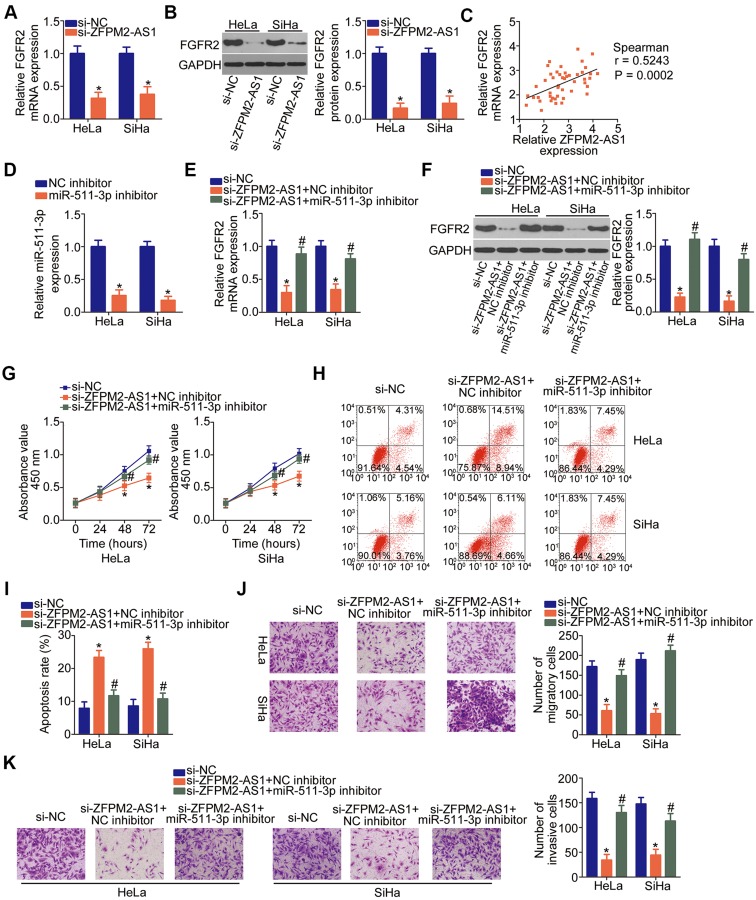Figure 6.
The miR-511-3p–FGFR2 axis is responsible for the cancer-promoting activities of ZFPM2-AS1 in cervical cancer cells. (A, B) The mRNA and protein levels of FGFR2 were determined in HeLa and SiHa cells treated with either si-ZFPM2-AS1 or si-NC using RT-qPCR and Western blotting, respectively. *P < 0.05 vs the si-NC group. (C) Spearman correlation analysis was applied to demonstrate the positive correlation between FGFR2 mRNA and ZFPM2-AS1 expression levels in the cervical cancer tissue samples. r = 0.524., P = 0.0002. (D) RT-qPCR was carried out to measure miR-511-3p expression in HeLa and SiHa cells that were transfected with either the miR-511-3p inhibitor or NC inhibitor. *P < 0.05 vs the NC inhibitor group. (E, F) Either the miR-511-3p inhibitor or NC inhibitor along with si-ZFPM2-AS1 was introduced into HeLa and SiHa cells. After the transfection, RT-qPCR and Western blotting were carried out to evaluate the change in FGFR2 expression. *P < 0.05 vs group si-NC. #P < 0.05 vs group si-ZFPM2-AS1+NC inhibitor. (G–K) A series of functional experiments, including the CCK-8 assay, flow-cytometric analysis, and Transwell migration and invasion assays (x200 magnification), was conducted to respectively examine the proliferation, apoptosis, migration, and invasiveness of HeLa and SiHa cells that were treated as descried above. *P < 0.05 vs the si-NC group. #P < 0.05 vs group si-ZFPM2-AS1+NC inhibitor.

